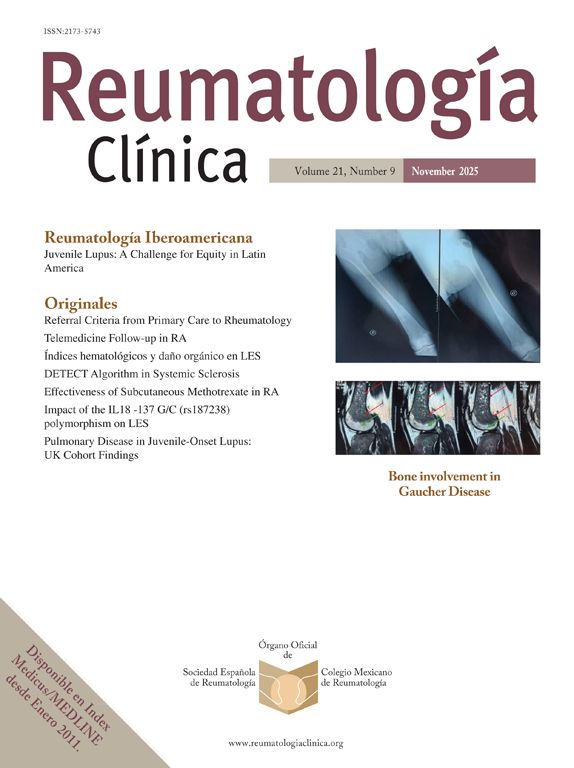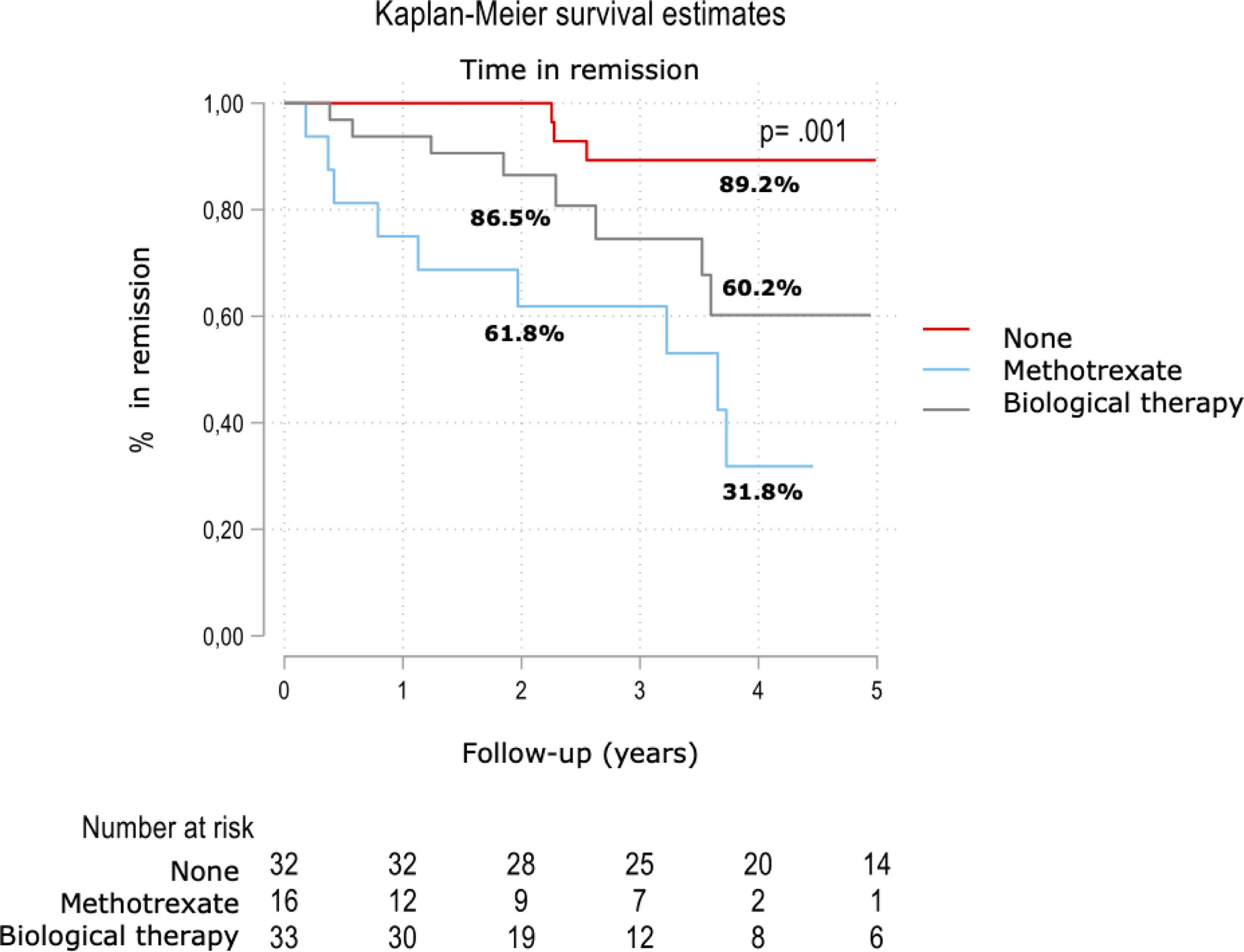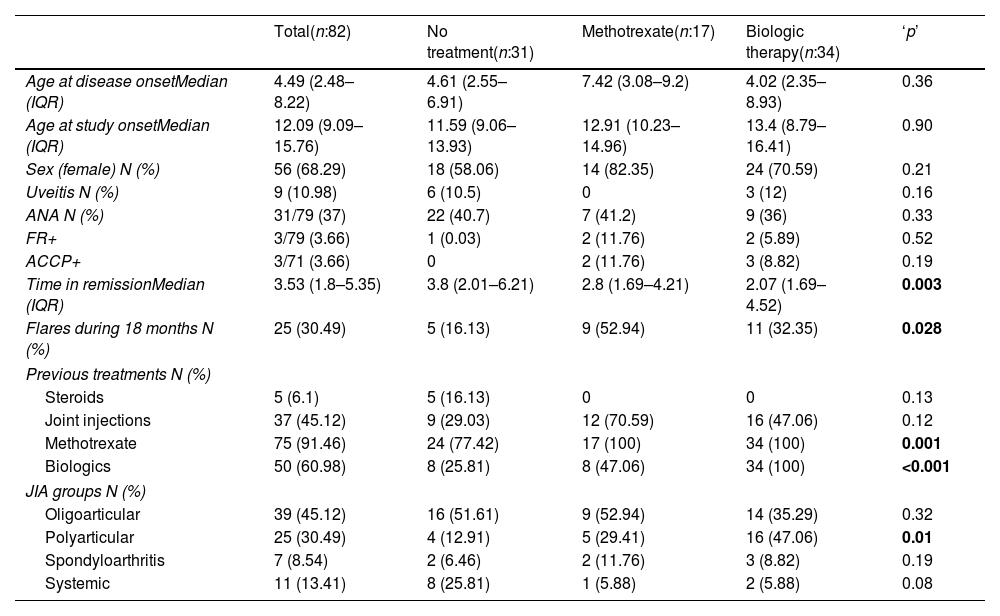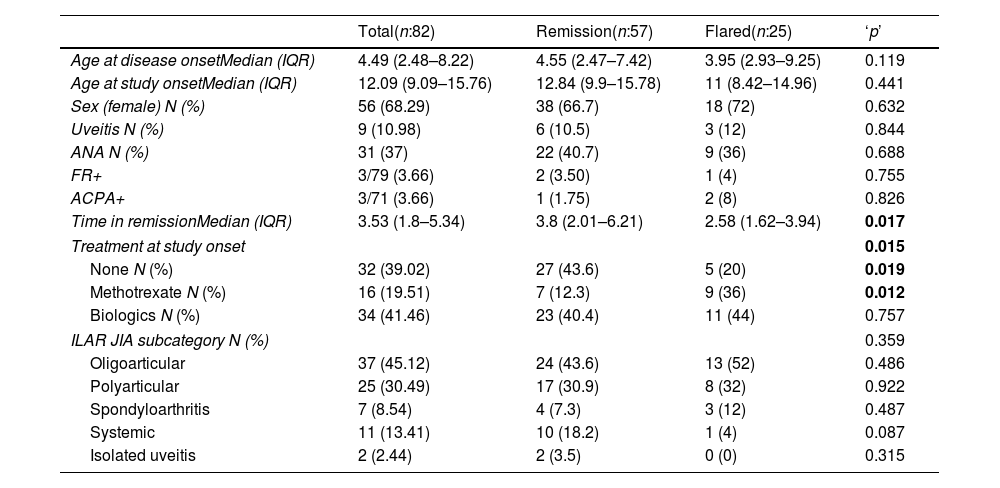Juvenile idiopathic arthritis (JIA) is a chronic inflammatory disease that can cause pediatric disability. Achieving stable remission is the main objective to avoid disability. We evaluated remission survival in a cohort of patients with JIA and analyzed factors that might influence long lasting remission.
MethodsWe designed an observational, retrospective and longitudinal study of JIA patients. Remission survival was determined from the first visit in clinical remission to the first flare after remission or the last visit recorded at the end of the study. Stable remission was defined as patients fulfilling the Wallace criteria during 18 months of the Covid pandemic. To compare the role of treatment on stable remission, we divided patients into three groups: without systemic treatment, treated with methotrexate only and treated with biologics.
ResultsWe included 82 JIA patients, 68.3% of whom were female and the median age of disease onset was 4.49 years old. There were no differences in the remission survival rates between JIA subgroups. Nearly 80% had maintained remission at 3 years and a high proportion of patients (68.3%) were still in remission after 5 years. Fifty-seven patients (69.5%) reached stable remission throughout 18 months of the Covid-19 pandemic. Stable remission was more likely in patients without systemic treatment (47.4%) (p=0.015).
ConclusionsRemission survival was long-term in real life conditions, with nearly 80% of our patients maintaining stable remission after 3 years. Flares were more frequent in patients treated with methotrexate in monotherapy.
La artritis idiopática juvenil (AIJ) es una enfermedad crónica inflamatoria que puede generar discapacidad en pacientes pediátricos. Lograr una remisión estable es el principal objetivo para evitarlo. Evaluamos la supervivencia de la remisión en una cohorte de pacientes con AIJ y analizamos los factores que podrían influir en la remisión duradera.
MétodosSe diseñó un estudio observacional, retrospectivo y longitudinal de pacientes con AIJ. La supervivencia de la remisión se determinó desde la primera visita en remisión clínica hasta el primer brote después de la remisión o la última visita registrada al final del estudio. La remisión estable se definió como los pacientes que cumplieron los criterios de Wallace durante los 18 meses de la pandemia de covid-19. Comparamos la remisión estable según el tratamiento recibido: sin tratamiento sistémico, tratados solo con metotrexato y tratados con fármacos biológicos.
ResultadosSe incluyeron 82 pacientes con AIJ. El 68,3% eran mujeres, y la mediana de edad de inicio de la enfermedad fue de 4,49 años. No hubo diferencias en las tasas de supervivencia de la remisión entre los subgrupos de AIJ. Casi el 80% había mantenido la remisión a los 3 años y un alto porcentaje de pacientes (68,3%) seguían en remisión a los 5 años. El 69,5% alcanzó una remisión estable a lo largo de los 18 meses de pandemia de covid-19. La remisión estable fue más probable en los pacientes sin tratamiento sistémico (47,4%) (p=0,015).
ConclusionesLa supervivencia de la remisión fue duradera con casi el 80% de nuestros pacientes, manteniendo una remisión estable después de 3 años. Los brotes fueron más frecuentes en los pacientes tratados con metotrexato en monoterapia.











